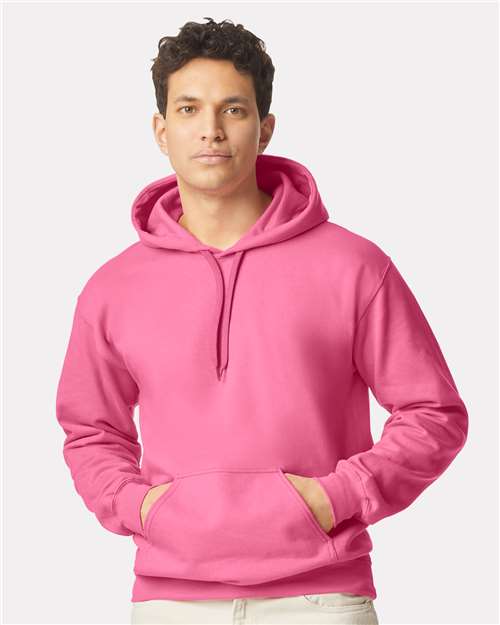
How to Start a T-Shirt, Hoodie, or Sweatshirt Printing Business from Home: A Step-by-Step Guide
Have you ever dreamed of launching your own custom apparel business from the comfort of your home? Today’s booming market for personalized t-shirts, hoodies, and sweatshirts makes it easier than ever to start your own printing business. In this detailed guide, we’ll walk you through every step—from planning and setting up your workspace to choosing the right selling platforms and learning from successful entrepreneurs. Let’s dive in!
1. Define Your Niche & Develop a Business Plan
Identify Your Niche:
Before diving into production, decide what makes your brand unique. Will you focus on:
- Trendy Designs: Pop culture, memes, or fashion-forward graphics?
- Inspirational Quotes: Motivational and lifestyle messages?
- Local Pride: Designs tailored for your community or regional events?
Craft a Business Plan:
Outline your goals, target market, budget, and timeline. A solid business plan should include:
- Market Research: Identify your competitors and potential customer base.
- Budget & Funding: Calculate startup costs for equipment, supplies, and marketing.
- Marketing Strategy: Define how you’ll promote your brand online and offline.
- Growth Goals: Set realistic milestones for production, sales, and expansion.
2. Set Up Your Home Workspace
Create a Dedicated Space:
Transform a section of your home into a functional studio. Essential components include:
- Worktable or Desk: A sturdy surface for design and printing work.
- Storage Solutions: Organize supplies, fabrics, and equipment neatly.
- Good Lighting: Ensure proper lighting for designing and quality checks.
Invest in Essential Equipment:
Depending on your chosen printing method, you may need:
- Computer & Design Software: Tools like Adobe Illustrator, Photoshop, or free alternatives like GIMP and Inkscape for creating designs.
-
Printer Options:
- Heat Press Machine: Ideal for transferring prints onto fabrics.
- DTF (Direct-to-Film) Printer: For vibrant, durable prints on t-shirts, hoodies, and sweatshirts.
- Screen Printing Equipment: A traditional method great for bulk orders.
3. Master the Art of Design
Design Software & Tools:
Invest time in learning graphic design tools. There are many online tutorials that can help you get started with software like Adobe Illustrator, Canva, or CorelDRAW.
Create Eye-Catching Designs:
Focus on originality and quality. Research current trends and draw inspiration from:
- Social Media Platforms: Instagram, Pinterest, and TikTok are treasure troves for trendy design ideas.
- Design Communities: Platforms like Behance and Dribbble can provide inspiration and feedback.
4. Choose Your Printing Method
Popular Printing Methods:
-
Direct-to-Film (DTF) Printing:
- Advantages: Produces vibrant, durable prints with high color accuracy.
- Best For: Detailed designs and small to large batch orders.
-
Heat Transfer Printing:
- Advantages: Simple and cost-effective for beginners.
- Best For: Short runs and custom designs.
-
Screen Printing:
- Advantages: Excellent for bulk orders and high-volume production.
- Best For: Basic designs and solid colors.
Experiment and Perfect Your Technique:
Start with small orders to test and refine your process before scaling up.
5. Establish Your Brand and Online Presence
Develop a Memorable Brand Identity:
- Logo & Branding: Design a unique logo and consistent branding elements.
- Website: Create a professional website showcasing your portfolio, services, and testimonials.
- Social Media: Use platforms like Instagram, Facebook, and Pinterest to share your work, behind-the-scenes processes, and customer success stories.
SEO Keywords to Consider:
- Home T-Shirt Printing Business
- Custom Hoodie Printing from Home
- Sweatshirt Printing Business Ideas
- Print on Demand Success
- DIY Apparel Business
6. Leverage Selling Marketplaces
Online Marketplaces for Maximum Reach:
-
Etsy:
Perfect for handmade and unique custom apparel. Etsy’s community values originality and quality. -
Amazon & Merch by Amazon:
Use Amazon’s vast audience to reach millions of potential customers. Print-on-demand services make it easier to scale without heavy upfront inventory costs. -
eBay:
Ideal for limited edition runs and promotional items. -
Redbubble & Teespring:
These platforms are excellent for designers looking to sell without handling inventory or shipping logistics.
Tips for Success:
- High-Quality Images: Showcase your products with professional photos.
- SEO-Friendly Listings: Use keywords in your product titles and descriptions.
- Customer Reviews: Encourage satisfied customers to leave reviews, building trust and credibility.
7. Market Your Business Effectively
Digital Marketing Strategies:
-
Social Media Advertising:
Utilize Facebook, Instagram, and Pinterest ads to target your ideal customers. -
Email Marketing:
Build an email list and send regular updates, promotions, and exclusive offers. -
Influencer Partnerships:
Collaborate with local influencers or bloggers to expand your reach.
Offline Marketing Ideas:
-
Local Events:
Participate in community fairs, pop-up shops, and local markets to build brand awareness. -
Networking:
Attend business networking events in your area to connect with other entrepreneurs and potential customers.
8. Manage Operations and Finances
Set Up an Efficient Workflow:
-
Inventory Management:
Keep track of supplies, finished products, and orders with simple inventory tools. -
Order Processing:
Streamline your order fulfillment process using software solutions that integrate with your selling platforms. -
Financial Management:
Use accounting software like QuickBooks or FreshBooks to manage invoices, expenses, and profits.
Scaling Your Business:
As your business grows, consider reinvesting profits into better equipment, hiring additional help, or expanding your product line.
9. Learn from Success Stories
Inspiration from Successful Entrepreneurs:
-
Case Study 1: The Local Legend:
Jane, a stay-at-home mom from California, started her custom t-shirt business with a single heat press machine and a passion for design. Through strategic social media marketing and partnerships with local events, she built a loyal customer base and expanded her product line to include hoodies and sweatshirts. Today, her business thrives both online and at local markets. -
Case Study 2: The Digital Dynamo:
Mike, a graphic designer from New York, leveraged print-on-demand platforms like Merch by Amazon and Redbubble to sell his unique designs without the overhead of inventory. His focus on SEO-friendly listings and consistent social media engagement helped him grow his monthly sales from a few dozen to hundreds of orders. -
Case Study 3: The DIY Innovator:
Sara, a creative entrepreneur, turned her love for custom apparel into a profitable home business by combining DIY techniques with modern printing technology. By attending local craft fairs and using influencer collaborations, she quickly became a recognized name in her community.
10. Final Thoughts
Starting a t-shirt, hoodie, or sweatshirt printing business from home is an exciting opportunity that blends creativity with entrepreneurship. With careful planning, the right tools, and a strong marketing strategy, you can turn your passion into a profitable venture.
Ready to start your custom apparel journey?
Embrace the challenge, learn from the successes of others, and remember that every great business starts with a single step. Your dream of running a successful home-based printing business is within reach!
Start your journey today and join the ranks of innovative entrepreneurs who are making their mark in the custom apparel industry. For more tips, insights, and success stories, subscribe to our newsletter and never miss an update!




